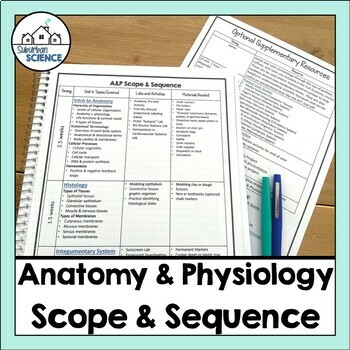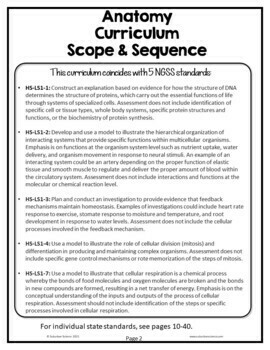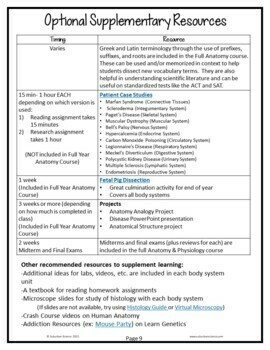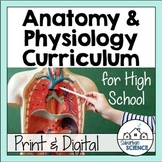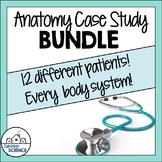- PDF
Also included in
- This Anatomy and Physiology curriculum is comprehensive and engaging! The lessons, labs, guided notes, doodle notes, projects, and assessments included in this rigorous and streamlined course provide everything you need for a full year of high school Human Anatomy and Physiology, Health Science, orPrice $280.00Original Price $363.50Save $83.50
- This is a HUGE bundle of doodle notes, diagrams, and worksheets that are made to align with your Anatomy and Physiology or Health Science curriculum! Over 90 pages of beautifully designed, engaging doodle notes that will save your sanity and add creativity to your classroom! SAVE 25% with this bigPrice $95.00Original Price $132.50Save $37.50
- Looking for anatomy resources to fit the laboratory portion of a high school Biology or Human Anatomy course? This Anatomy and Physiology bundle contains 34 thorough and engaging activities for hands-on learning! The labs and activities included in this bundle are designed to be easy to use and alPrice $85.00Original Price $117.00Save $32.00
- High school students love learning about diseases through anatomy case studies! This is a great addition to an Anatomy & Physiology, Health Sciences, or Medical Pathology course and the problem-based lessons provide a great example of real NGSS phenomena. Case studies are perfect for extending tPrice $35.00Original Price $42.00Save $7.00
Description
Looking for an Anatomy and Physiology scope and sequence? Need a year-long pacing guide for your Anatomy course? This curriculum map will help you plan your course and includes topics to cover, NGSS and state standards, materials, and lab activity ideas!
Want to be DONE planning for your whole year? Get everything you need with my Full Year Anatomy and Physiology Course! It includes PowerPoints, Cornell notes, doodle notes, activities, labs and dissections, literacy and math extensions, projects, and assessments!
You are welcome to use this overview to create your own syllabus or scope and sequence document, but please follow the included terms of use.
The scope and sequence includes estimated timing for each unit, standards addressed, basic topics covered, additional topics for extra study, possible labs, and necessary materials.
This document also includes all the standards addressed by each unit in my full curriculum. NGSS and state standards are included by topic. If your state isn't listed, please contact me at support@suburbanscience.com and I'll be glad to check the standards for you.
➤What teachers are saying about this curriculum:
- "This resource was an absolute lifesaver for me! I used the Powerpoints, worksheets, and activities in this bundle as the bulk of my curriculum for the year."
- "The Powerpoint presentations and worksheets are amazing, and editable so you can add and remove whatever you need for it to work in your classroom!"
- "This is my go-to for my anatomy class."
- "Well organized, easy to use and very detailed."
- "Very straightforward and to the point, which is hard to do with the abundance of material in an anatomy class. I can not thank you enough. What a great purchase!!"
➤To see each Anatomy & Physiology Unit, follow the links below:
Lymphatic System & Immune Response
Or get the Full Anatomy Curriculum which includes all these units for 20% off!
➤Want to add some rigor and fun to your Anatomy course? Check out my Anatomy Case Study Bundle!
________________________________________________________________________
⭐For updates about sales and new products, please follow my store: My TpT Store
You can also
⭐Subscribe to my newsletter for freebies and teaching tips
⭐Follow me on Instagram
⭐Check out my Facebook page
⭐Follow me on Pinterest
I value your feedback. Please rate this product. If you have any issues or questions about this product, please feel free to ask a question in my store or write to me at support@suburbanscience.com.

